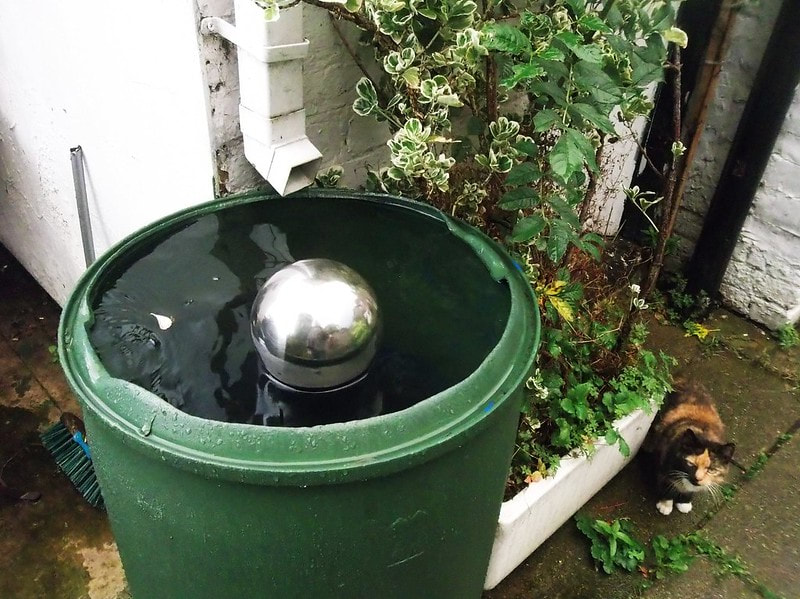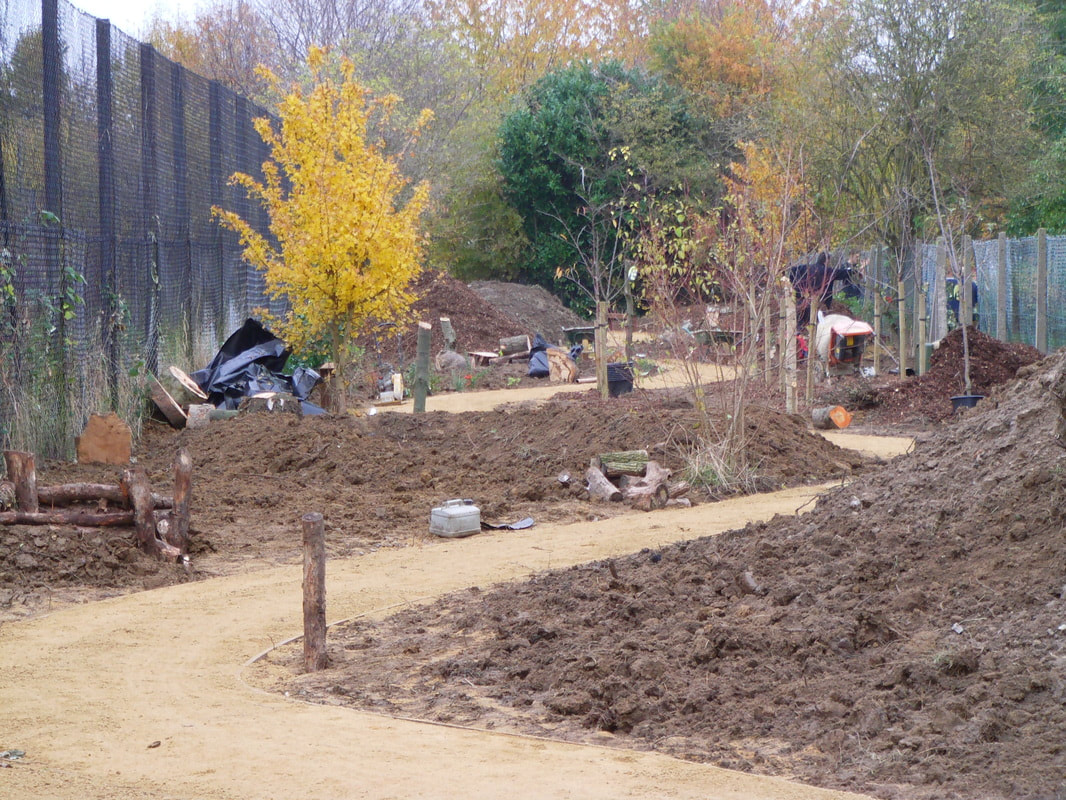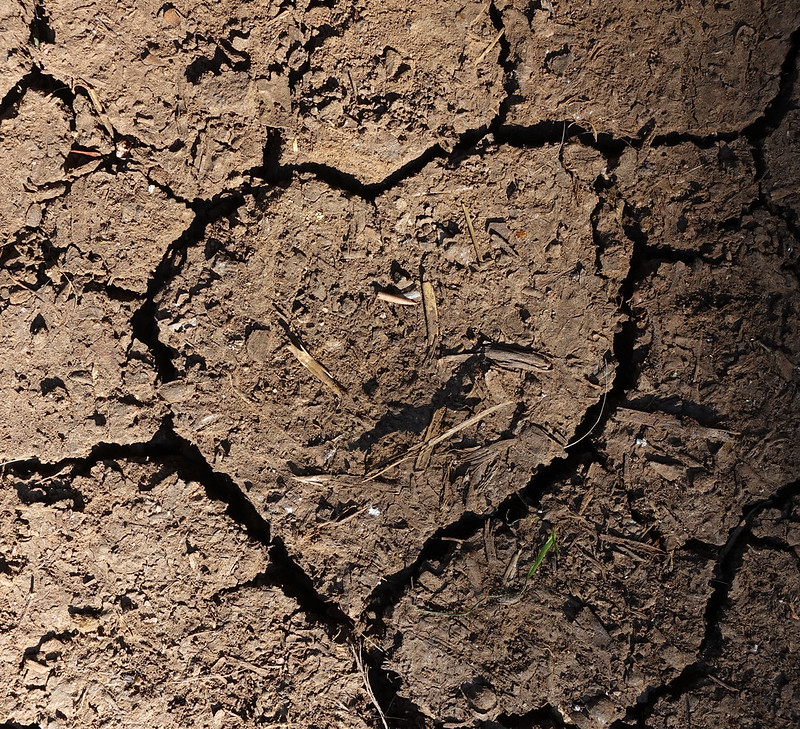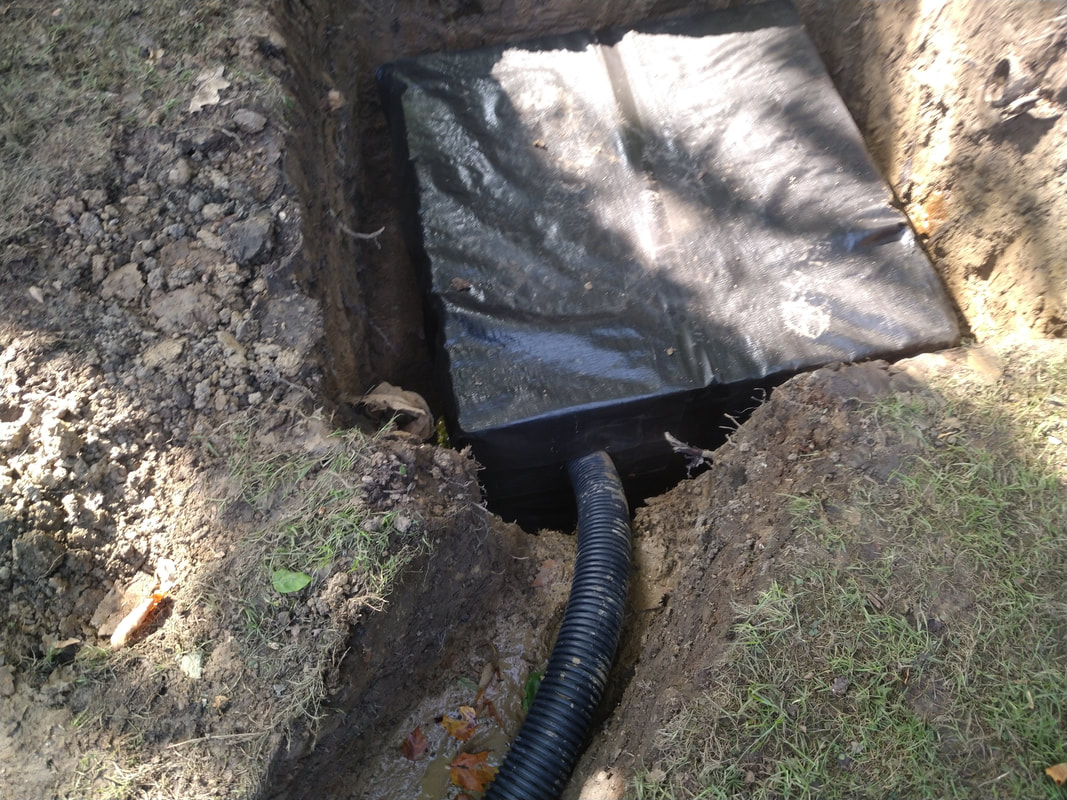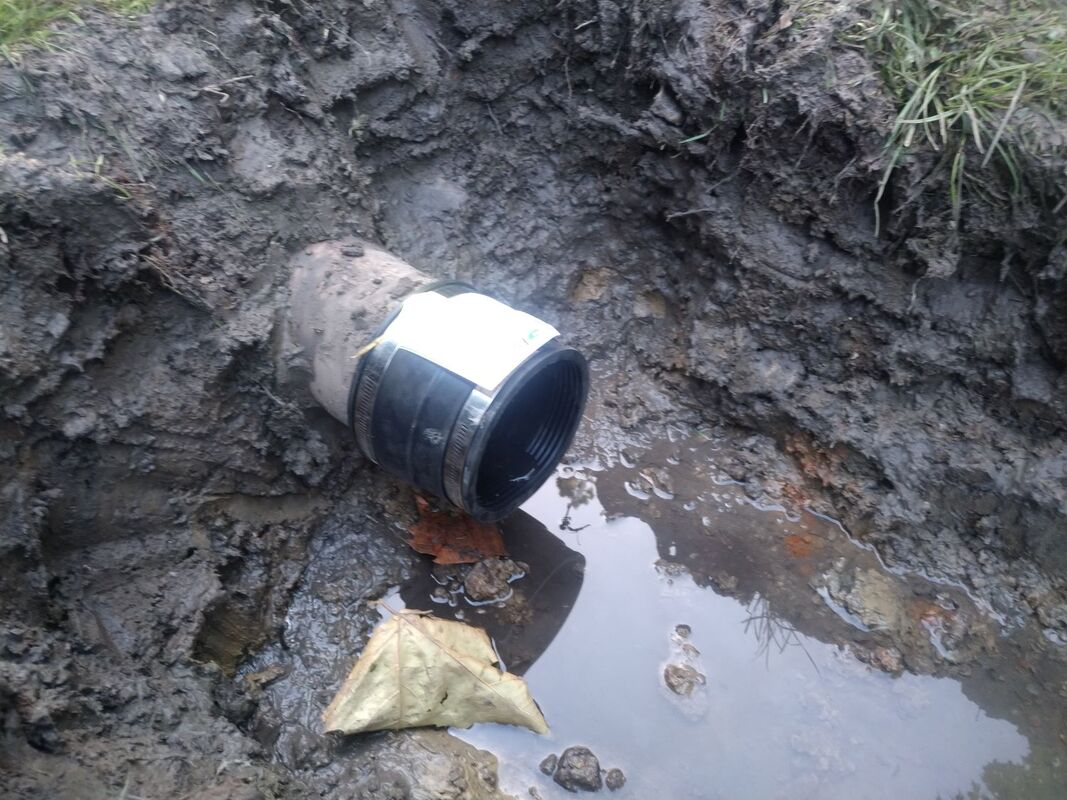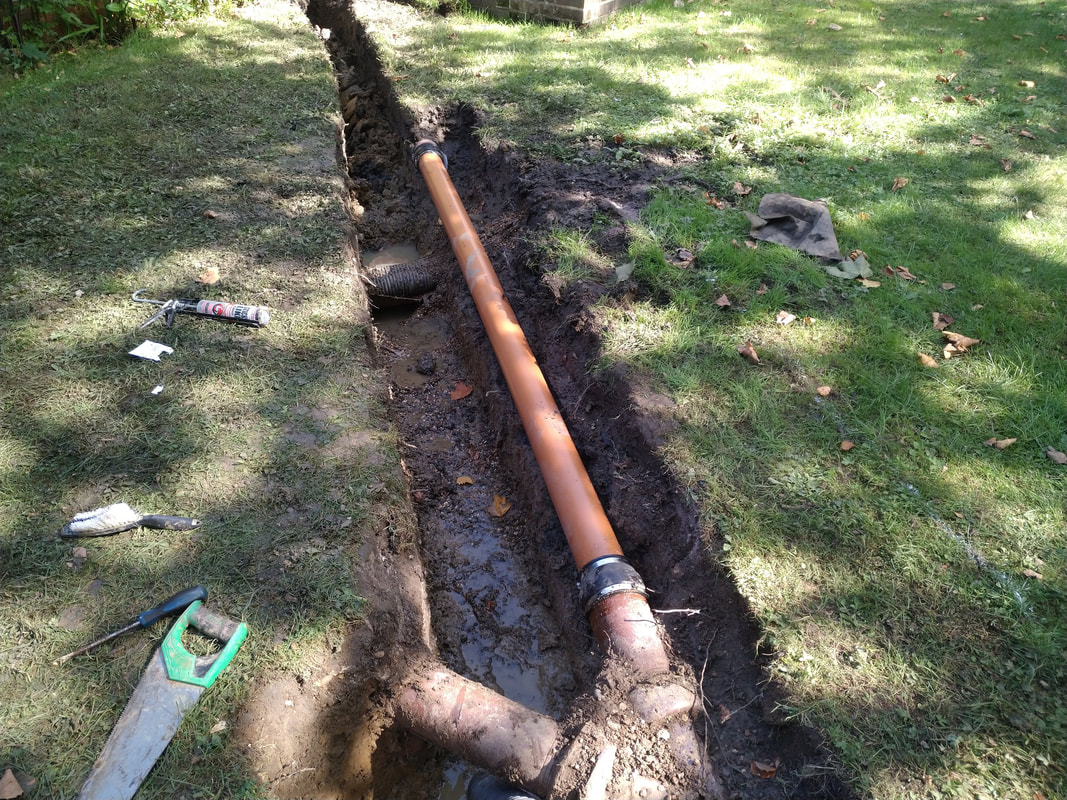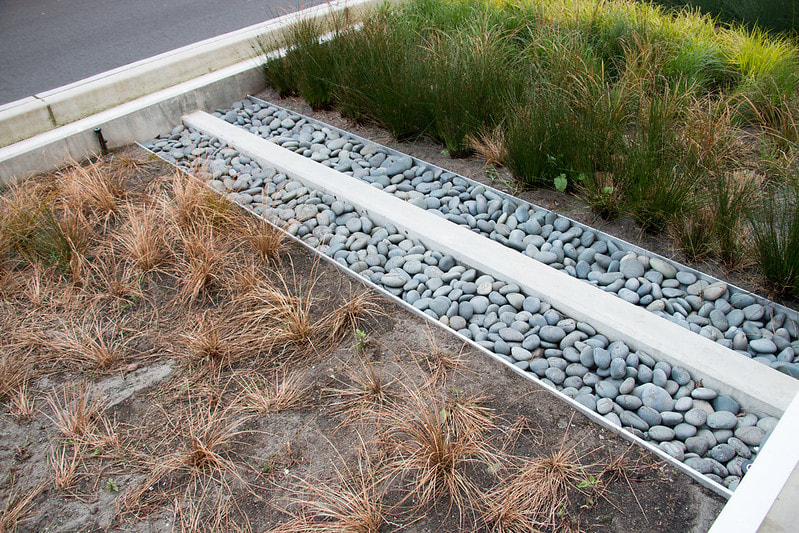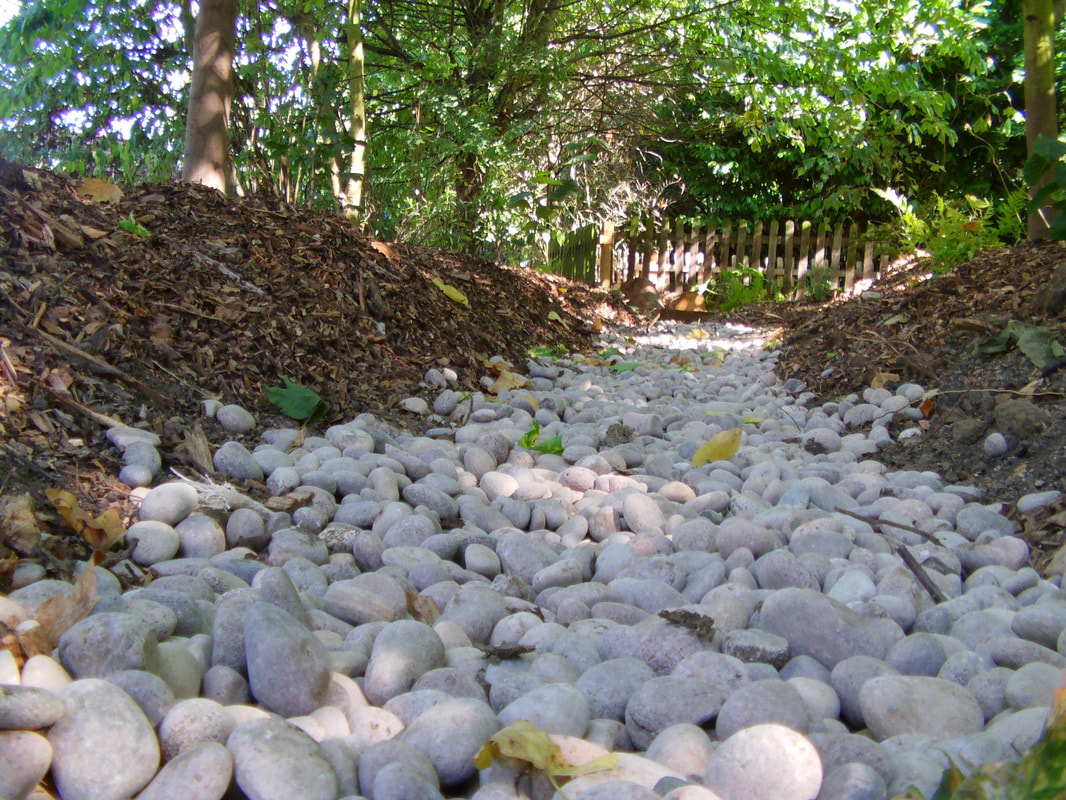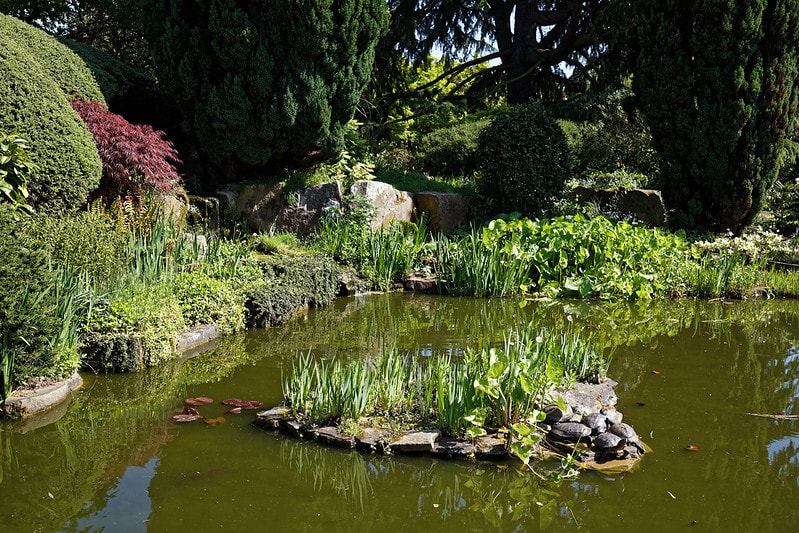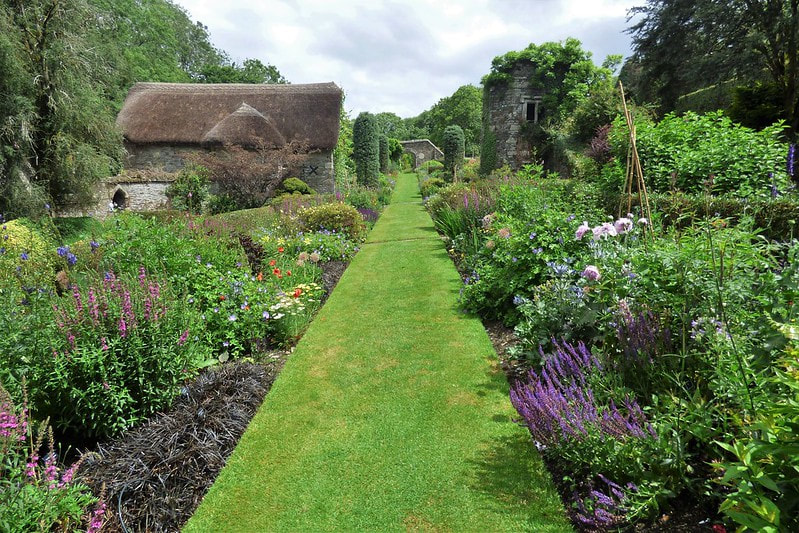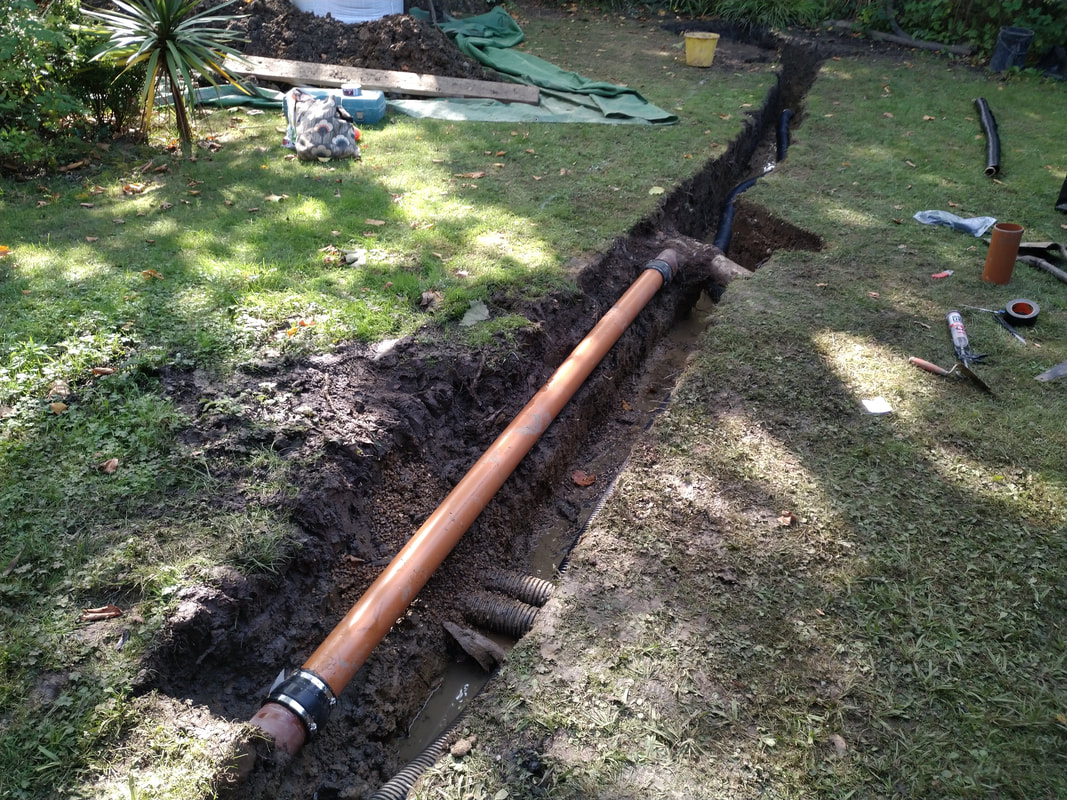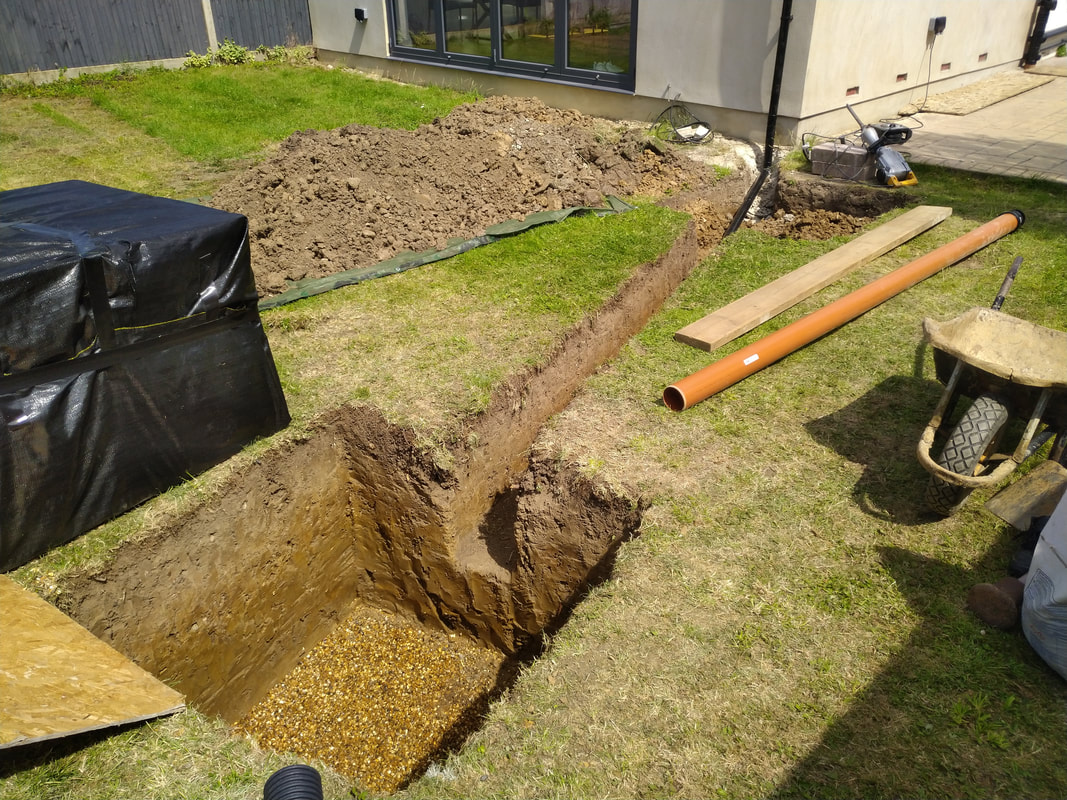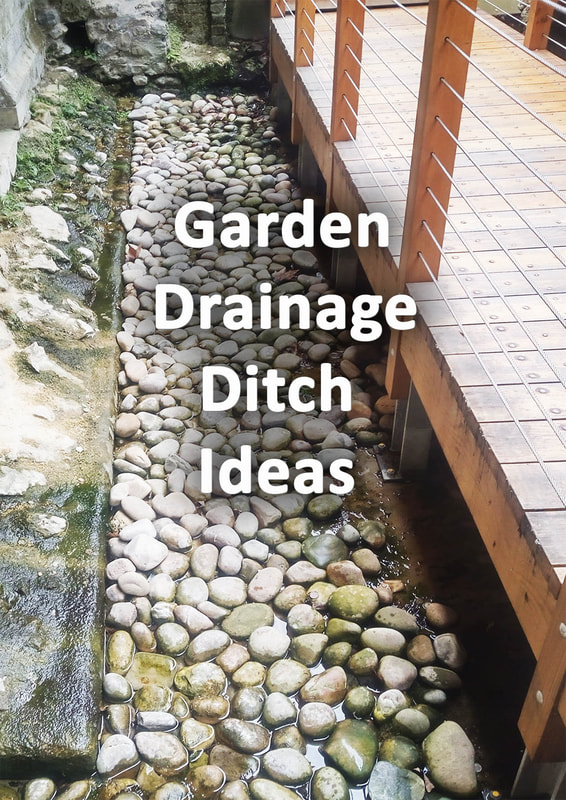|
This article contains affiliate links
An ever increasing issue in gardens is the problem of flooding and boggy ground. Saturated gardens can easily become compacted and are difficult to develop into usable garden space. Flooded gardens are not always a result of just heavy rain. If your garden is becoming excessively boggy there are a number of reasons why this could be the case.
If boggy conditions have come out of the blue with no obvious increase in rainfall there could be other factors at play. Surprisingly there can be a whole range of possibilities to why new flooding can be taking place. If your saturated garden is a new issue or one which has persisted for some time there is usually a solution. Resolving the solution will depend on diagnosing the correct cause in the first place. In this article I will discuss the potential hazards of having a boggy garden, what are the common reasons for them and your options for correcting the problem. Why drain your back garden?
A back garden which is saturated with water is both difficult to maintain and enjoy. Wet, boggy ground leads to mud stained shoes, clothes and a complete inability to enjoy the garden. A site where the soil is constantly moist leads to extra compaction which leads to shrinkage and cracking in summer. This situation makes it almost impossible to grow plants.
The ground becomes devoid of oxygen and soil life which makes it impossible for it to absorb nutrients. A lack of oxygen also makes the ground smell stagnant and fowl. These ground conditions typically lead to the roots of plants rotting and eventual death. This can be a serious issue if your drainage problem has evolved over time. Boggy gardens usually end up unsightly with ruts and divots in lawns and swamped flower beds. These conditions are also a threat to safety. Slippery surfaces and uneven ground can lead to slips and falls which can cause a number of injuries. These conditions are also extremely dangerous when using tools during maintenance regimes. Probably the biggest problem with boggy gardens is the fact they cause damp conditions for surrounding buildings. Continuous wet ground around buildings can cause rising damp and even subsidence. Brickwork and masonry can become prone to freeze and thaw action and algae build up. Timber structures can become saturated and rotten. Ultimately a wet boggy back garden can lead to serious structural damage to your home and surrounding buildings. Why is my garden boggy & flooding?
There are many reasons for flooding and modern trends in our landscaping preferences make it now commonplace.
Over the past 40 years our free time for recreational gardening has declined dramatically. The typical pursuit of a ‘low maintenance garden’ has led to a reduction in cultivated flower beds and manicured lawns. These have historically absorbed excess storm runoff allowing water to escape back into the subsoil. Gardens have also seen a reduction in trees and shrubs which help to draw water out of the soil through transpiration. Extensive hard surfaces in the form of decking and paving prevent rainwater from reaching the underlying ground. These surfaces accelerate runoff and overwhelm drainage networks as well as the grounds natural ability to absorb water. The explosion in car ownership has also seen many front gardens turn into new parking bays. Artificial lawn has also become a major new trend which has also accelerated these problems. This has all combined with more unpredictable weather patterns including a higher average, annual rainfall. Recent construction
If your garden has recently started to become flooded looking over the fence can sometimes find a reason. Recent construction in the form of extensions and patios can reduce local ground permeability. These can also increase fast run off leading to excess storm water with nowhere to run. New extensions are a common reason for this problem.
Sustainable drainage policy
Many new sustainable development rules and policies prevent new buildings plumbing their guttering into the storm drainage network. This is to help prevent flash flooding during times of heavy rain. New construction is required to pipe runoff into a cubic metre soak away 5 metres away from the building. This has led to hundreds of thousands of gallons of water sitting under our gardens with nowhere to go.
To add to the problem some builders reduce their cost by simply running guttering channels into flower beds. This is particularly common with summer houses and garden offices which stay under the minimum requirements for local planning permission. Such extensive flash flooding of our gardens could cause a ticking time bomb for property subsidence in the future. New extensions and even concrete bases for summer houses all add impervious mass and weight to the soil. This extra weight can also increase the hydraulic pressure within the ground bringing ground water to the surface. Impermeable surfaces
Impermeable surfaces are all hard garden surfaces which do not allow water to permeate. These include patios, decking, concrete and tarmac. These all prevent water absorption and accelerate runoff. There are some landscape hard surfaces which will allow some permeability such as resin bonded aggregate and open textured tarmac.
However if you wish to install a hard surface which is fully permeable the best option is loose gravels. If you have impermeable surfaces in your garden that you believe are causing flooding you must identify where run off is travelling to. This can be done with a spirit level to identify the lowest point. Water should then be collected via a grilled chamber of some sort. It can then be channelled to a soak away or a French drain. Local level changes
Very often when level changes are made locally they can directly affect your gardens drainage and moisture content. It is typical to see one flooded garden raise its level and subsequently move the flooding problem next door. Water always flows to the lowest point, if your garden suddenly becomes the lowest it will also become the wettest.
Not only will low levels create a soggy garden a change of contours and gradient can also have the same effect. This can even be the case if the changes are next door. I recall a property I lived in where the neighbour dug out a patio and spread the spoil around the garden to save money. He created two new gradients where the water ran to the centre of the garden. As our garden was lower it then meant the centre of our lawn was soggy every winter. It can sometimes be very surprising just how seemingly gentle changes in contour can cause gardens to start flooding. An uneven garden
One of the most common causes of local flooding in gardens is due to low areas and uneven ground. Even if your neighbour is lower than you an uneven garden will collect water in low lying areas. One of the best ways to prevent flooding and standing water is to create as level garden surface as possible.
This can be achieved by re-landscaping the ground to get rid of any divots and damming. This is most effectively executed by bringing a layer of free draining material such as sharp sand to mix with the top soil layer. Surrounding topography
When trying to understand why a garden may flood surrounding topography can be a massive factor. If your garden is at the foot of a hill or in a low lying funnel you can expect some excess runoff. When assessing a flooding issue look at the surrounding levels and wider landscape.
Try to work out where the water is naturally flowing from. When you have identified the waters entry point you can then seek to intercept the flow and re-direct it to where you want it to go. This usually involves getting the water to the lowest boundary of your garden so it can escape. Underlying hydrology
A large contributing factor of if your garden will flood or not is underlying hydrology. This is the natural water movement and saturation level of the local area. These are directly affected by a multitude of different factors including annual rainfall, topography, bedrock and soil type.
These factors combined with where your locality sits within a wider river basin or catchment will determine your ground saturation. If you have naturally high water table the greater the possibility of flooding in your garden. High water table
The water table is the level at which ground water naturally sits in your area at any given time of the year. Typically the water table will vary throughout the year being high in winter and low in summer. This will depend on current and recent rainfall totals.
You can learn more about your local water table levels by contacting your local authorities. Find out if you live within proximity to local rivers or low lying wetland areas. Do you live within a flood risk zone? Clay
Clay is a common soil type formed over millions of years from sedimentary shale deposits. Clay soil can be extremely dry and hard in summer and sticky and unworkable in winter. This makes this soil type rather undesirable when it comes to gardening.
The worst aspect of having a heavy clay soil is the way it behaves in wet conditions. In times of heavy rain clay soil can become extremely saturated and compacted. This compacted sticky mess can become impervious meaning water can no longer drain through it. This results in flooded areas where surface water cannot permeate the ground. Compaction
Compaction is not just a problem reserved for clay soil types. Where ever there is excess moisture, heavy footfall or activities requiring heavy objects ground can become compact. This compaction leads to a soil with no oxygen meaning water finds it difficult to pass through it. This type of compaction with many soil types can result in a flooded garden even if you do not have a high water table in your area.
Blocked drainage network
A very common cause of flooded gardens is an existing drainage network which has become blocked. This is particularly the case where locally ground has had historic drainage problems. It is common for old land drains to become silted up over time or broken by tree roots or ground movement. I have seen these scenarios many times when diagnosing landscape drainage problems.
Many old land drains are a simple affair consisting of a series of clay pipes simply butted tightly together under the ground. Over time these simply become clogged up and fail leading to boggy ground conditions. I have seen examples of contractors breaking through clay storm drains and assuming they are redundant. Typically if a pipe has silt inside many contractors become convinced it’s not serving an important role. These can simply be left broken only to clog completely leaving someone with a boggy garden further up hill. Drainage pipes and networks come in a whole range of sizes and types. Over time these can become clogged up or fail due to ground movement. If you experience a sudden drainage problem occur very suddenly this is usually a common cause. A drainage test pit
A very crucial factor to diagnosing a solution for your drainage issue will depend on ground saturation. Some ground is so saturated that no matter what void is excavated it will simply continuously fill with water. This commonly indicates a foreign source point for excess water.
This is particularly so if the drainage issue is a new occurrence. The test pit method allows you to get an idea of if your gardens ground will drain naturally. By digging a hole 300mm deep by 300mm x 300mm wide you will be able to observe if water drains naturally back into the ground. If water simply sits there for days on end your ground is at maximum saturation. This could mean natural absorption methods like soak ways may not be enough. In this instance there may be a case for water to be directed to the main storm network. Consequently permission will have to be granted from your local authority. If ground water is causing damp and damage to property there is a very good case for such action. Solutions
Most of the time there will be a solution to your garden drainage problem. To find a solution requires the correct diagnosis of the problem in the first place. Once this has been achieved the correct solution or combination of solutions can be implemented.
We have broken down some of the typical garden drainage solutions below. All of these solutions success are dependent on your gardens ability to still absorb water naturally. If a test pit reveals your garden is at maximum saturation you may have to go further. This will mean making a case to drain the water into the local storm network. In this case advice and permission from your local authority should be sought. Garden re-levelling
It is very common for gardens drainage problems to be related to its surface levels. If surface levels form low spots, damming or runoff into areas with no drainage or escape flooding will result. By creating a flush and consistent garden surface level water has less opportunity to collect.
By identifying your lowest boundary you can identify where water naturally wants to escape. Hence it makes sense to re-level your garden to a flush surface which falls into the lowest exit point. Create a free draining layer
Most rainwater runoff moves through and over the top few centimetres of the ground. If your garden is particularly compacted or not free draining you will expect to have puddles. This directly leads to flooded areas and ground saturation.
An effective way of preventing this is to create a free draining layer. This consists of a layer of sand or soil layer with added drainage. This allows water to pass through the surface and drain into either a drainage system or away from your garden. Drainage channels
Drainage channels consist of linear excavations back filled with free draining materials such as non calcareous aggregates. These also typically house drainage pipes such as perforated pipes. Drainage channels have two main functions; to capture and retain excess landscape water and to direct it into a specific, desired location or drainage system.
Drainage channels come in a number of sizes and formats depending on what drainage outcome you desire. Below I have described some common examples of landscape drainage channels. Herringbone drainage system
A Herringbone drainage system consists of a central drainage pipe with alternate drainage channels feeding into it. The multiple tributary like alternate channels increase the surface catchment area of the effected area. This is a popular system for draining lawns or irregular expanses of boggy ground. The main and secondary channels usually consist of free draining aggregates and drainage pipes. These can either lead to a main drain, wetland feature or soak away system.
Grid drainage system
A grid drainage system uses tributary channels but in a much more intensive way. Grid systems main collection pipe typically runs around the perimeter of the catchment area. The tributary channels run across the central drainage area normally in a grid or lattice formation.
This more intensive system is ideal for sports greens and rectangular show lawns. With an even spacing the grid system can insure a more consistent moisture content throughout the year. This method is the most labour intensive hence the most expensive to install. It is however the most effective. French drains
A French drain is a linear drainage channel with a central pipe backfilled with a free draining aggregate. These simple channels link areas of flooded ground directly into a drainage feature. This can be the main storm water drainage network, soak away or ecological drainage system. French drains are one of the most basic forms of landscape drainage.
Soak-aways
Soak-aways are an excavated void in the ground which accept excess storm water and store it. Soak-aways are typically around a metre cubed and incorporated where there is no drainage network to plumb into.
Modern ecological drainage policies mean it is now typical to not allow runoff from new developments into the drainage network. This has meant an increase in the need for soak ways to capture excess storm water. Traditionally soak-aways were a large trench simply filled with old builder’s rubble and rough aggregates. However the materials in these usually take up a large volume of the void meaning less water can be stored. These systems would also silt up extremely quickly causing them to fail. A new and modern solution is reinforced plastic soak-away crates. These crates slot together with a void which can hold a large amount of water. These can be wrapped in filtration fabric, lowered into an excavated void and then backfilled with free draining aggregates. Ground water can be channelled into soakaways via landscape drainage channels containing perforated pipes and gravel. Broken drainage pipes
Sometimes broken pipes under the ground can cause garden flooding and drainage issues. Many old drainage pipes can be many decades old and made from materials such as clay and concrete. These can loosely be fixed together and can become dislodged after many years.
Tree roots and ground subsidence can cause these channels to rupture leading to silting, blockages and water discharge. This is rarely an issue with sewage pipes as these are set deeper into the ground and typically go through front gardens. However old land drains and storm water networks can run through gardens and become easily disturbed. Many old drainage channels have become silted and look redundant but are still actually carrying large amounts of water runoff. It is common for contractors to accidently dig them up, assume they are redundant and remove them. I have seen many examples of this including the example images I have put below. In this instance the old clay pipe was ruptured and left to silt up. This pipe was carrying run off from the homes roof and hard surfaces into a land drain. The result was an extremely boggy garden with constant standing water on the lawn. How to fix broken clay, concrete or plastic drainage pipes
If you discover broken pipes under the ground when investigating a drainage issue you must do the following:
Step 1
Excavate around the affected area carefully, try to expose and locate the broken pipe work.
Step 2
Carefully flake away any small parts of broken pipe preferably at the top side. Use these openings to gauge how much the pipe is blocked, silted or filled with standing water.
Step 3
Excavate back on either side of the broken pipes to expose where the pipe is still in good condition. Dig out the full circumference of each good end of the broken pipe section.
Step 4
Carefully remove the broken section of pipe work. There may be a sudden discharge of backlogged water and sludge, clear this from the area. If the pipes are clay, concrete or plastic try to make sure there are no horizontal breaks or cracks running along the pipe.
If there are these sections will also need removing. Cut back to the nearest pipes in good condition at a neat right angle. This can be done with a diamond cutter or sharp saw for plastic. Examine each end of the pipes still in the ground. If they are heavily silted do your best clear the pipe work and flush them through with water. Step 5
Carefully excavate around each end of the good pipes left in the ground. Make sure you have at least a 75mm section proud all the way around the pipe. Clean the pipe ends with a stiff hand brush and a bucket of water to remove any silt. Once clean leave to dry out or wipe dry with a cloth.
Step 6
Obtain a suitable replacement section of pipe specifically for underground drainage at the same or similar diameter to the existing pipe. It is very typical for old pipes to be made from clay so a new replacement will be plastic. This means you will also need specific adapters for each end of the pipes.
Step 7
Obtain clay to plastic pipe rubber adapters for each new connection, These can be found on Amazon here. As in the images provided this demonstrates the typical scenario of an older clay pipe being connected to a new plastic replacement. Measure the diameter of the old pipes these are usually between 100-110mm.
Measure the width of the new pipe which is usually about the same width. At a builders merchant locate a rubber adapter with screw ring seal joints that will accommodate your pipes diameters. Step 8
Offer up the new section of pipe next to the removed section and mark the pipe where you need to cut it. It is important to assess how much play distance the rubber adapter gives you when cutting your pipe. You will need to cut your pipe slightly shorter than the gap itself to be able to squeeze the pipe between the adapters. Cut your pipe at a suitable length to fit the repair distance.
Step 9
Fit your adapters to each of the existing pipe work, make sure the pipes are clear of dirt and dry. When you are satisfied of a tight fit remove them and apply an external grade waterproof sealant to the circumference of the pipe work. Place the adapters back onto the pipes securely and tighten up the screw ring seal joints until they are tight.
Step 10
Apply more sealant and spread thinly around the ends of the new section of pipe. Squeeze the section of repair pipe in-between and into the new adapters until they are secure. Tighten up the screw ring seal joints securely. And make sure there is no dripping from each join. For extra strength and reinforcement each join can be set within concrete with a waterproof admixture.
Step 11
Back fill the trench. If you have disturbed the ground much deeper than the pipe itself it is important to compact the ground underneath it. This will reduce settlement and downward soil, settlement, pressure on the pipes connections.
This can be done with a layer of concrete or compactable mot type 1. When back filling it is advisable to lay 50mm layer of sand or warning tape above where the pipes sit in the ground. This will give notice to any future excavations they are just above a service of some kind. Back fill the trench and replace any surface medium which was there beforehand. Ecological drainage
Ecological drainage is the design and installation of drainage systems which either mitigate the loss of natural habitats or provide drainage which harmoniously interacts with wetland ecosystems. Typical urban, drainage systems allow polluted water from our roads, pavements and buildings to flow into natural watercourses.
This can poison rivers and add dangerous chemicals into the hydraulic cycle which we rely upon. Ecological drainage systems harness waste water and allow them to be absorbed into naturalistic wetlands. Here water can be filtered and even cleaned by wetland plants and microorganisms. These drainage systems can even become a part of scenic, wetland environments perfect for recreation sports and wildlife conservation. On a local scale ecological drainage can reduce urban runoff, prevent flooding and create wetland habitats such as wildlife ponds. Some good examples of ecological drainage include permeable surfaces, bioswales, bog gardens and seasonal flooding ponds. Permeable surfaces
One of the biggest problems facing our towns and gardens in regard to drainage is impermeable surfaces. Patios, pavements and driveways accelerate the rate at which rain water enters the ground.
They also reduce the surface area of natural ground with a topsoil layer. Topsoil is capable of absorbing very large amounts of storm water. As more and more people pave over their gardens the less possible it is for water to be absorbed naturally. One effective ecological drainage solution is to install free draining permeable surfaces to your garden. Surfaces such as free binding gravel, loose gravel and resin bound aggregate are good examples of these. Bioswales
Bio-swales are landscape channels or depressions which collect storm water channelling it through an ecological cleaning system. As run-off travels through the bio-swale pollution and debris is removed by marginal ecosystems.
Microscopic plant life and bacteria help to break down toxins and water is filtered and oxygenated by the roots of wetland plants. Bio-swales can be large expanses of low lying ground, wetland meadows or smaller rain garden type features. As well as their ecological drainage function bio-swales can become very aesthetic landscaping features. These can come in the form of linear wildlife ponds or beautifully planted dry river beds. Bog gardens
A bog garden is a garden which makes use of a constant state of soil saturation with excess water. Essentially this will mimic natural wetlands or marsh habitats within nature. These can be artificially created with pond liners or taking advantage of an existing drainage problem.
Either way bog gardens can not only provide you somewhere to drain water they can also look very attractive. Boulders, submerged logs and attractive bog plants can all combine to create a fantastic focal point which attracts local wildlife. Channels can be installed to collect rain water from your hard surfaces and direct them to a bog garden. This will allow excess rainwater to permeate the ground naturally. Seasonal flooding ponds
A seasonal flooding pond is a pond which water level fluctuates throughout the year. Water levels in such ponds are typically high in winter and low in summer. Such ponds were once commonplace throughout natural landscapes before urbanisation and commercial agriculture. Seasonal flooding ponds and wetlands are vital for many species which rely on this specific seasonal hydrology.
Very much like bog gardens these can become a great way to drain a flooded garden. By acting as a natural soakaway they can draw excess water into them and store it while it absorbs back into the ground. Seasonal flooding ponds can be landscaped with attractive wetland plants, gravels, rocks, and logs. They can drain water from your garden, attract wildlife and look great all at the same time. Wildlife retention ponds
Wildlife ponds are becoming an ever popular landscape installation in many gardens. In reaction to accelerated biodiversity loss across the planet more people are seeking habitat boosters for their gardens. Not only can wildlife ponds help to provide food and shelter for wildlife they can also help alleviate garden flooding.
With clever landscape design wildlife retention ponds can be installed. These are traditional wildlife ponds but with an extra flood zone created out of mounded ground. Garden levels and falls can be directed into channels and swales which feed into the retention pond basin. In times of heavy rain the retention pond can accept large quantities of extra water within its basin. This controlled flooding means other areas of your garden can drain more freely. Grow more plants
One of the most basic principles of ecological drainage is to allow more runoff to be absorbed nature. The best way to accelerate this is to have as much open soil and planting as possible. Soil naturally absorbs huge quantities of water like a sponge. Its slow release helps feed watercourses, trees and plants with the water they need throughout the season.
Trees and plants take up excess water and release it into the atmosphere through transpiration. When planning a drainage system try to incorporate as much natural ground and planting as possible. This helps to redress to imbalance between natural and hard surfaces which directly causes most garden flooding in the first place. How to drain your garden with a pump
The video below shows you how to drain your garden with an electric pump. This may be necessary if you need to drain a large quantity of water before drainage investigations and works begin.
Conclusion
If you want to know how to drain your garden you must successfully diagnose what is causing the excess water in the first place. Correct diagnosis in the beginning is key to not wasting time and money on the wrong solution. Correct diagnosis depends on familiarising yourself with four key points: Your local floodplain, local topographical features, progressive development and saturation density.
Local flood plain
If your property sits within a low lying part of a river basin it is highly likely you have a high water table. This will means that especially in winter ground saturation will be high. This is more a natural feature of your locality than a specific problem that has arisen. This makes high water table scenarios more troublesome to fix.
By digging a test pit to see how long water drains can give you an idea of your water table level. In these scenarios raising your gardens level with free draining soil layer can be a solution. If your ground is so saturated it is causing damp in your property you should contact your local authority. Local topographical features
Most of the time garden drainage problems can be put down to topography. This includes low lying areas or neighbours which are higher than you. When assessing your drainage problem look at the levels of the surrounding gardens.
Are you in a low spot? Has one of your neighbours changed their garden levels causing a dam to surface run-off? The best solution here is to re-work your gardens levels so you have a consistent and flush gradient. This allows water to drain downhill stopping it from pooling in your garden. Progressive development
If your garden has become steadily more flooded over time it is possibly due to progressive development. Many urban gardens have seen a reduction in soft landscaping such as flowerbeds.
This has been accompanied by a rise in extensions, garden offices, artificial lawns and paving. All of these have made it more difficult for water to be absorbed by the ground. Most of the time excess water simply needs somewhere to escape. A simple drainage channel with a new soak away system is usually enough to solve the problem. Saturation density
When diagnosing a drainage issue assessing your backyards saturation density can be very important. Saturation density is when your garden is particularly wet in one area and not so wet in another. Normally a high saturation density is a result of a low spot. However if there is no obvious cause in terms of level there may be some other source of your flooding.
Normally a high saturation density in this scenario is nearly always man made. Localised boggy areas can be the location of a broken pipe, an old silted soak-away or where a neighbour’s drainage system meets your boundary. In these cases it is advisable to gently excavate these areas preferably in summer time. You may discover broken pipe work or an old, failed drainage system. Fixing such issues or installing a new soak-away should solve the problem. Dense root masses of trees and large shrubs can also cause impenetrable boundaries to surface water. This can cause areas of high saturation. Again a soak away will give the water somewhere to escape and slowly be re-absorbed by the landscape.
To drain a garden you have to identify where the surface water naturally wants to go, (down hill). If low spots or damming are preventing this you have to allow it a route to get there. If this is not an option a void must be created where the water can run to. Consequently in times of heavy rain water can be captured and slowly reabsorbed by the landscape. For this reason a combination of re-working garden levels and soak-aways are always the solution.
If you are about to start a landscape drainage project check out our resource page and recommended landscaping tools article here.
The book Practical Drainage is an extensive resource on landscape drainage and can be found on Amazon here.
Garden drainage services & drainage contractors in BuckinghamshireBuckinghamshire landscape gardeners are experts in garden drainage and provide a number of garden drainage solutions. Our garden drainage services include;
Our garden drainage services cover most of Buckinghamshire including:
If you require garden drainage services as well as landscaping services feel free to contact us.
4 Comments
4/12/2022 09:08:52 pm
Now I understand more about draining designs and how a French drain it's a basic structure that links different trenches for an efficient draining system. I'm looking this up since we're moving into a home with a larger backyard. I would probably need to consider the installation of these systems if I want to maintain a beautiful garden.
Reply
11/27/2022 06:14:59 pm
I like how you mentioned that the ground condition of soil depends on the developing function. The other day, my uncle mentioned he was planning to have a farm field tile service on their farm to help their fields be more manageable and produce more crops. He asked if I had any idea what would be the best option to consider. I wanted to thank you for your explanation. I'll tell him he should consult farm tiling services as they can provide information about the process.
Reply
4/5/2023 06:07:01 pm
We appreciate you mentioning that this prevents water from accumulating in your garden by allowing it to flow downhill. My father criticizes the pool drain for not being truly smooth. I'll advise her to get the inground pool liner updated.
Reply
Leave a Reply. |
The Author
|
Landscaping services across Buckinghamshire, Amersham, Aylesbury & High Wycombe
Hyde Heath, Amersham, Buckinghamshire |
|




